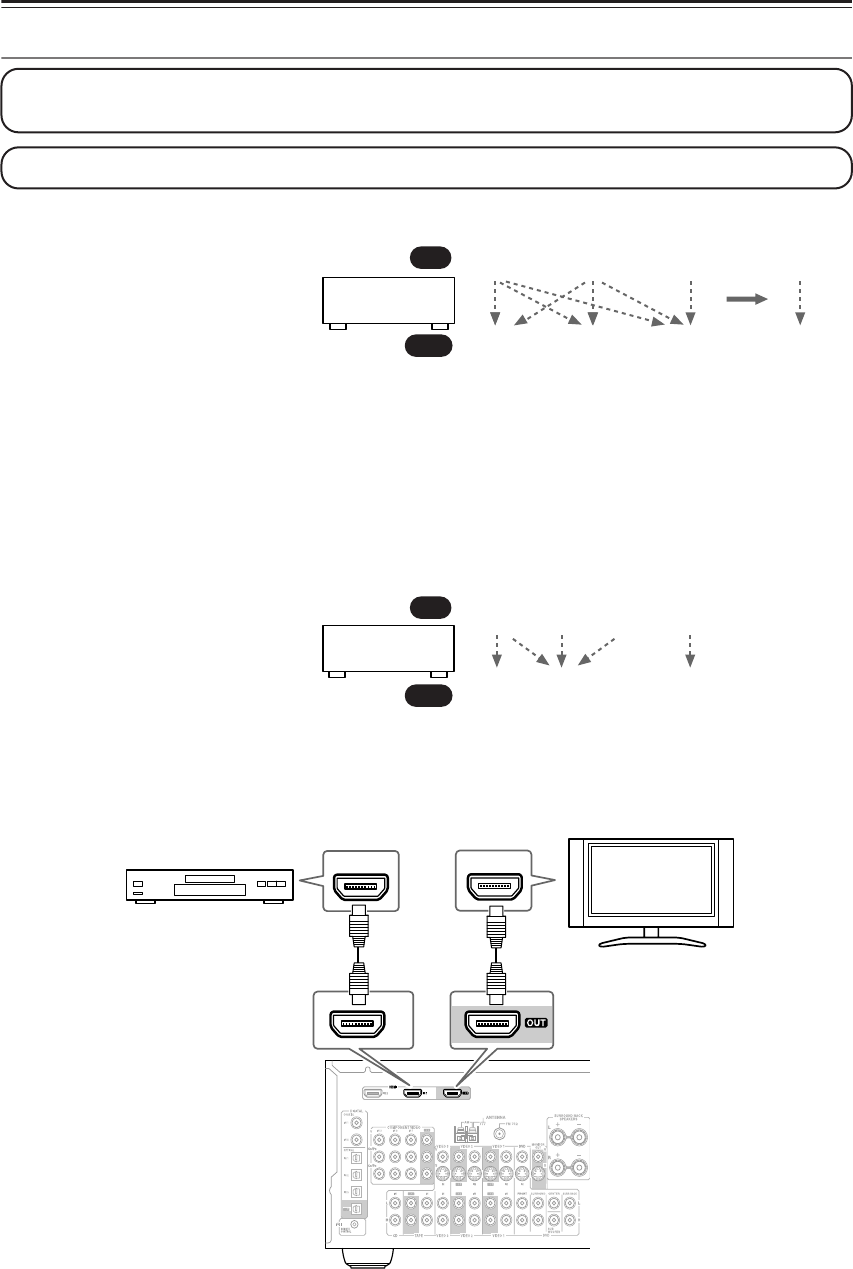
32
Connecting the AV Receiver—Continued
Making HDMI Connections
Video Signal Flow Chart
(TX-SR604/604E, TX-SR8460)
Digital video signals received at HDMI IN
1 and 2 are only output by the HDMI OUT
and sent to your TV. Composite video,
S-Video, and component video input sig-
nals are not output by the HDMI OUT.
Note:
The onscreen setup menus are not output by the HDMI OUT, so you’ll also need to make a composite video, S-Video,
or component video connection to your TV (see page 24).
(TX-SR674/674E, TX-SR8467)
Digital video signals received at HDMI IN 1 and 2 are only output by the HDMI OUT.
By configuring the AV receiver, input signals from the composite video, S-Video, and component video jacks can be
output through the HDMI OUT (see page 45).
Audio Signal Flow Chart
Digital audio signals received at HDMI
IN 1 or 2 are output by the speakers and
headphones connected to the AV receiver.
They’re also output by the OPTICAL
OUT and can be output by the HDMI
OUT by setting the HDMI Audio Out set-
ting to On (see page 76).
* To listen to audio received at HDMI IN 1 and 2 through your TV speakers, set the HDMI Audio Out setting to On
(see page 76) and your DVD player’s output setting to PCM.
Step 1: Use HDMI cables to connect the AV receiver’s HDMI jacks to your HDMI-compatible DVD player, TV,
projector, and so on.
Step 2: Assign each HDMI IN to an input selector in the HDMI Video setup (see page 45).
IN
OUT
AV receiver
Composite
Composite
S-Video
S-Video
Component
Component
HDMI
HDMI
*
* TX-SR674/674E/8467 only
IN
OUT
AV receiver
HDMI
HDMI
Optical
Optical
Coaxial
Analog
Analog
*
HDMI
IN
HDMI HDMI
IN 1
HDMI
OUT
TV
DVD player


















